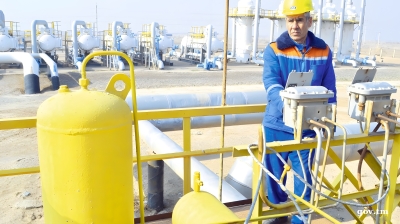Syrian President Ahmed al‑Sharaa met in the White House with US President Donald Trump, marking the first-ever visit by a Syrian head of state to Washington on November 10.
During the meeting, the two leaders signed agreements outlining Syria’s formal entry into the US‑led coalition against Islamic State (IS) and the suspension of major US sanctions for 180 days.
Both agreements carried symbolic and practical weight as Damascus seeks reconstruction and reintegration, and Washington seeks to reshape its Syria policy portfolio.
The agreement on IS‑coalition accession signals Syria’s shift from isolation to full engagement with global counter‑terror networks. According to US officials, the deal commits Syria to cooperating with the coalition’s intelligence and detention facility policies.
Syria will become the 90th member of the global coalition dedicated to eliminating the remnants of the so-called Islamic State and curbing the movement of foreign fighters into the Middle East.
Simultaneously, the US Treasury announced it would suspend significant provisions of the sanctions regime, particularly those enacted under the Caesar Syria Civilian Protection Act, for a six‑month period, allowing increased economic and rebuilding engagement in Syria.
In a statement, the US government said, “President Trump is delivering on his commitment to give Syria a chance at greatness and to let them rebuild and thrive by lifting US sanctions and ensuring accountability for harmful actors.”
The Treasury clarified that the suspension excludes certain transactions involving Russia and Iran, ensuring that broader strategic sanctions remain in effect. The move replaces a prior exemption issued on 23 May 2025.
A joint statement from the US Departments of State and Commerce, and the Office of Foreign Assets Control (OFAC), confirmed that the suspension allows most US-origin goods for civilian use, as well as software and technology, to be exported to or within Syria without requiring a license.
In May 2025, the US had already eased certain sanctions after Trump announced a freeze on the remaining economic penalties on Damascus. The current 180-day suspension strengthens economic engagement and reconstruction efforts in Syria while providing the US flexibility to maintain strategic oversight.
Donald Trump praised Syria’s new president, saying, “He’s a very strong leader,” Trump told reporters in the Oval Office. “He comes from a very tough place. Tough guy. I like him. I get along with the president, the new president in Syria, and we’ll do everything we can to make Syria successful, because that’s part of the Middle East.”
The White House meeting is being viewed as a strategic pivot by the US in the Middle East: tapping into a post‑Assad Syria that appears ready to align with Washington’s regional objectives, while offering Syria relief from economic isolation.
Ahmed al-Sharaa, a former rebel leader who headed Hayat Tahrir al-Sham (HTS), once affiliated with al-Qaida and designated a terrorist organisation by the United States, saw his group removed from the US terror list after it toppled Bashar al-Assad’s regime.
The $10mn bounty placed on Sharaa was also lifted. Washington has since expressed interest in Syria joining the US-led coalition against Islamic State, while Damascus has indicated plans to reopen its embassy in Washington, which was closed more than a decade ago under Assad.
However, significant challenges persist, as any complete removal of sanctions would require Congressional approval, while Israel has expressed concern about Syria’s reintegration in the absence of stronger assurances on security and regional stability.
News

Turkish military cargo plane flying from Azerbaijan crashes in Georgia
At least 20 personnel were on board aircraft that spiralled from sky and exploded in flames.

Iraq's parliamentary elections see 23.9% turnout by midday
Iraq's parliamentary elections see 23.9% turnout by midday with 4.795mn voters casting ballots. UN representative calls election day "moment of pride" for Iraqi democracy as 7,743 candidates compete for 329 parliamentary seats with 20mn eligible vote

Lufthansa reviews airspace safety as it prepares to resume Tehran flights
Germany’s flagship carrier Lufthansa carried out an on-site assessment of Imam Khomeini International Airport (IKA) and Iranian airspace as it prepares to restart flights between Frankfurt and Tehran in early 2026.

Ukraine’s anti-graft bureau targets ex-Zelenskiy business partner in sweeping energy corruption probe
Ukraine’s National Anti-Corruption Bureau (NABU) has carried out a series of high-profile searches in Kyiv, including premises linked to Timur Mindich, a former business partner of President Volodymyr Zelenskiy.



_1762772645.jpg)
